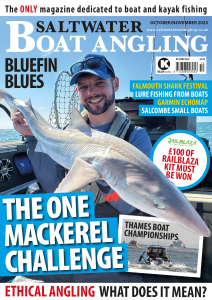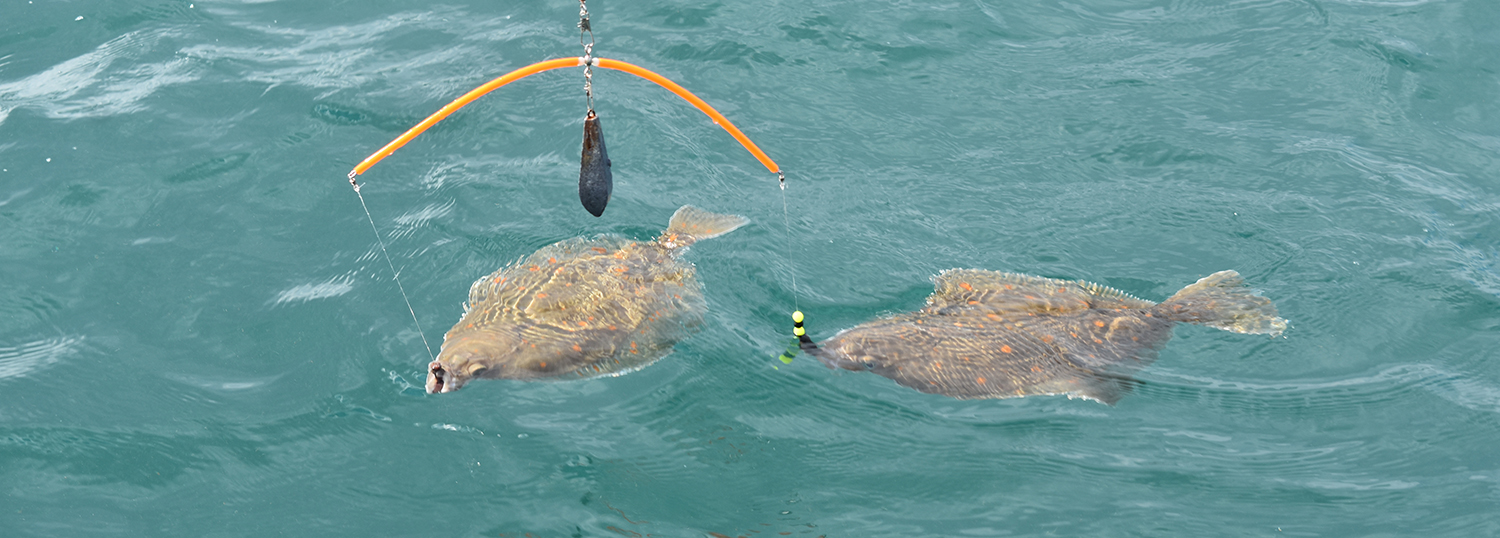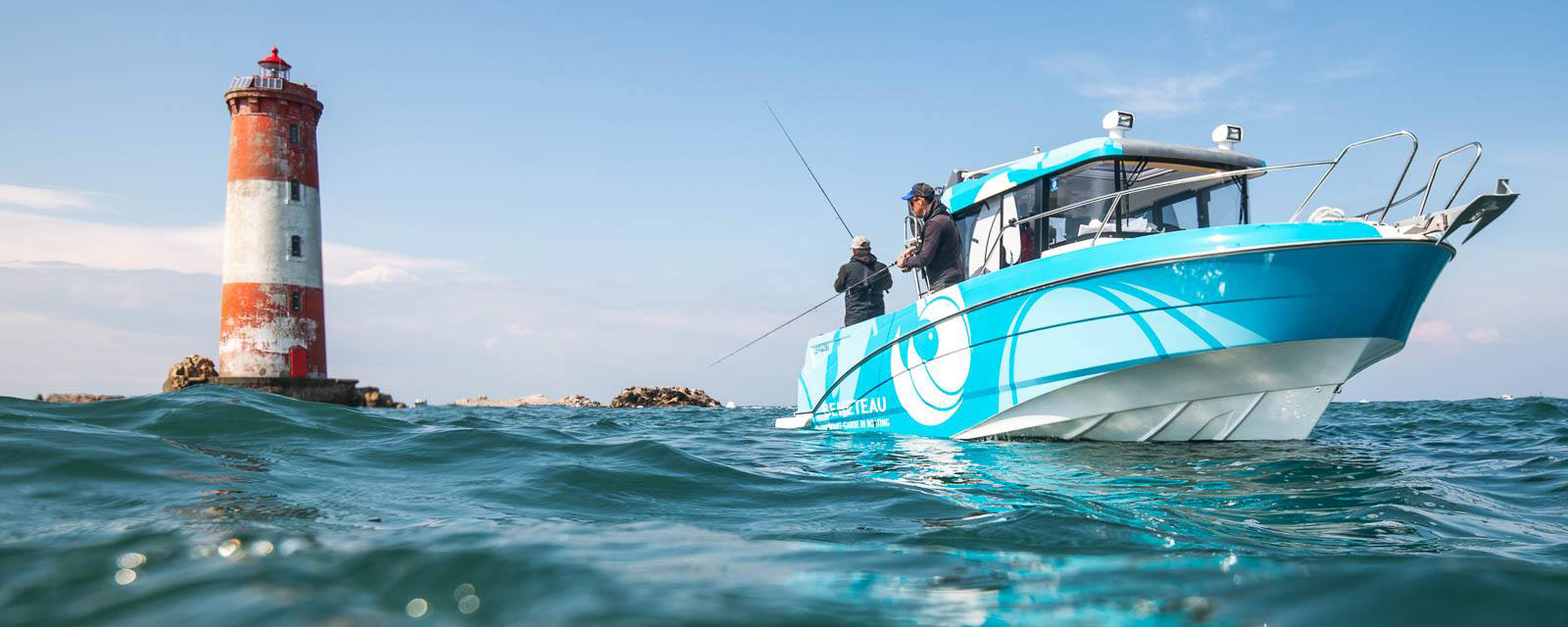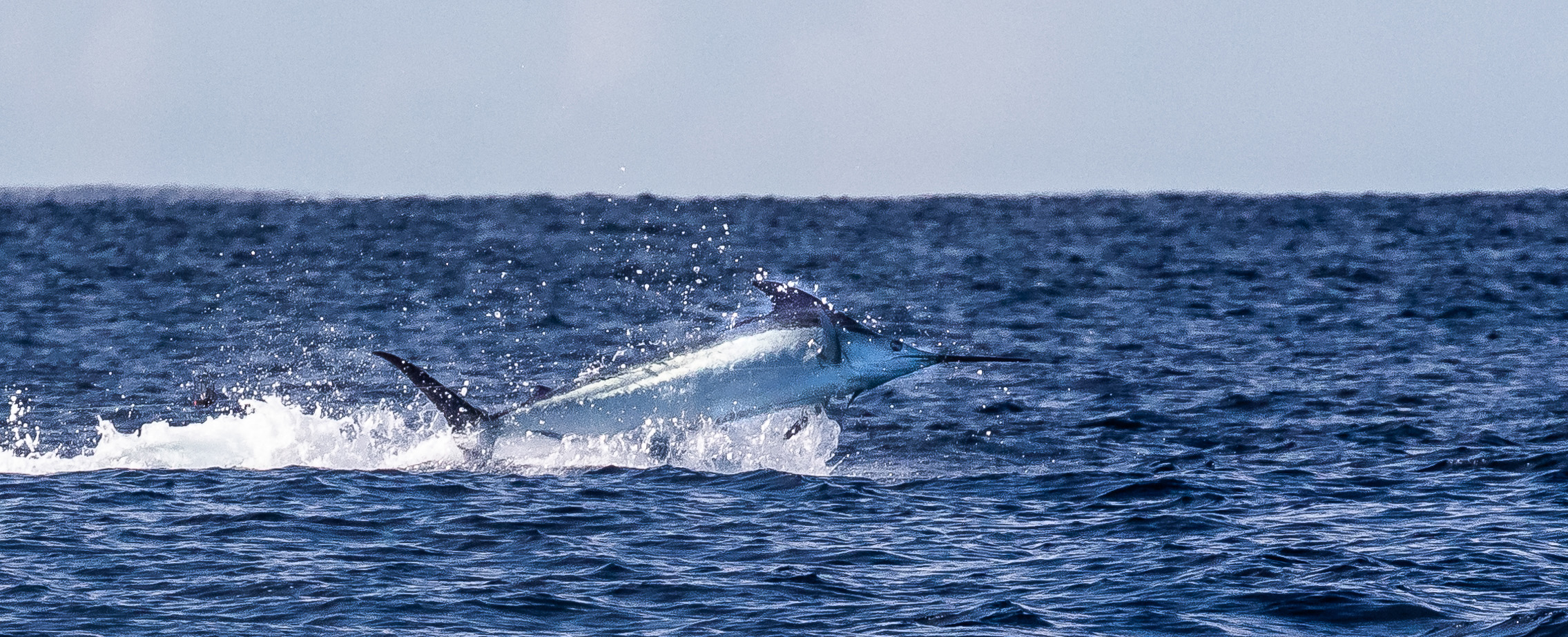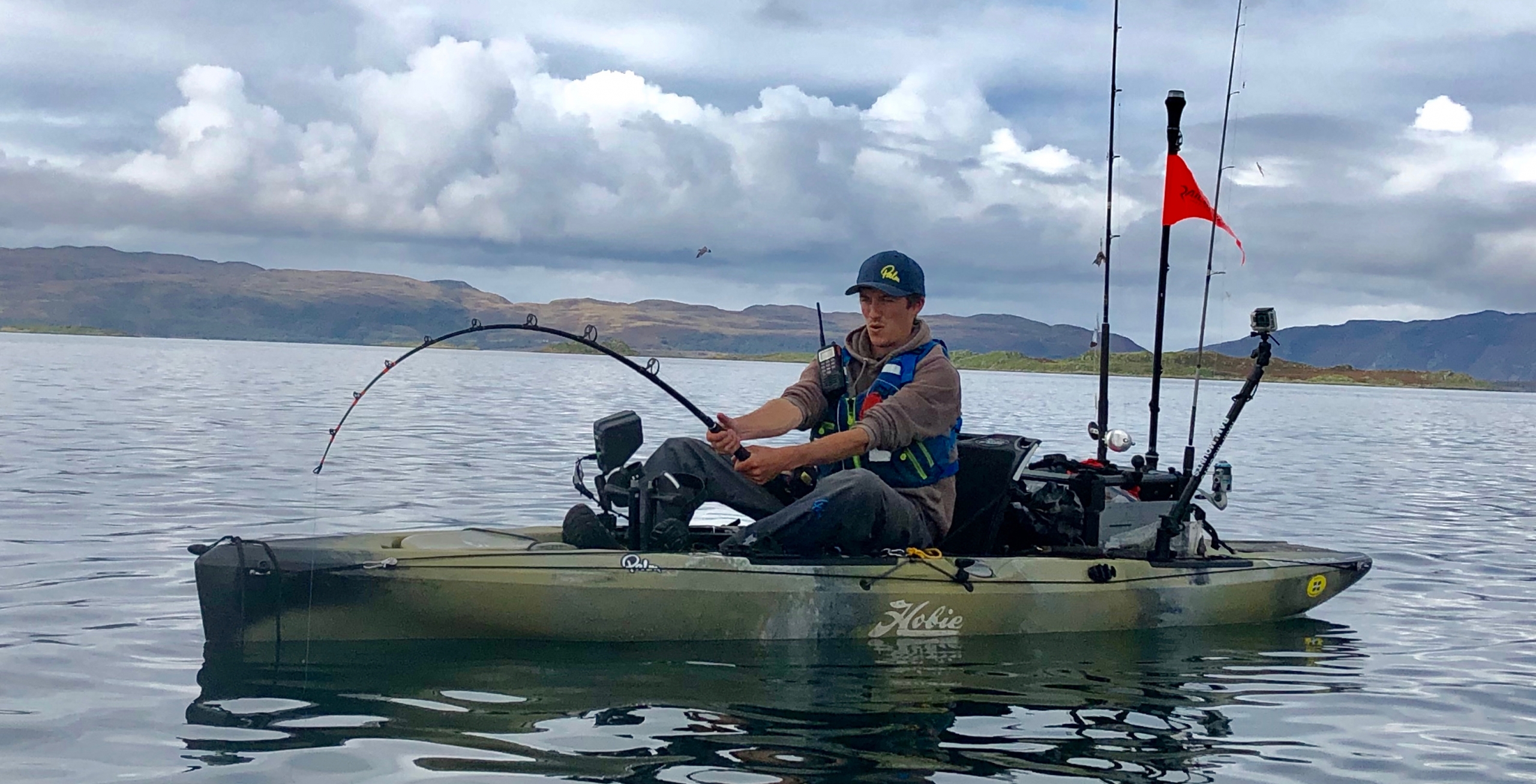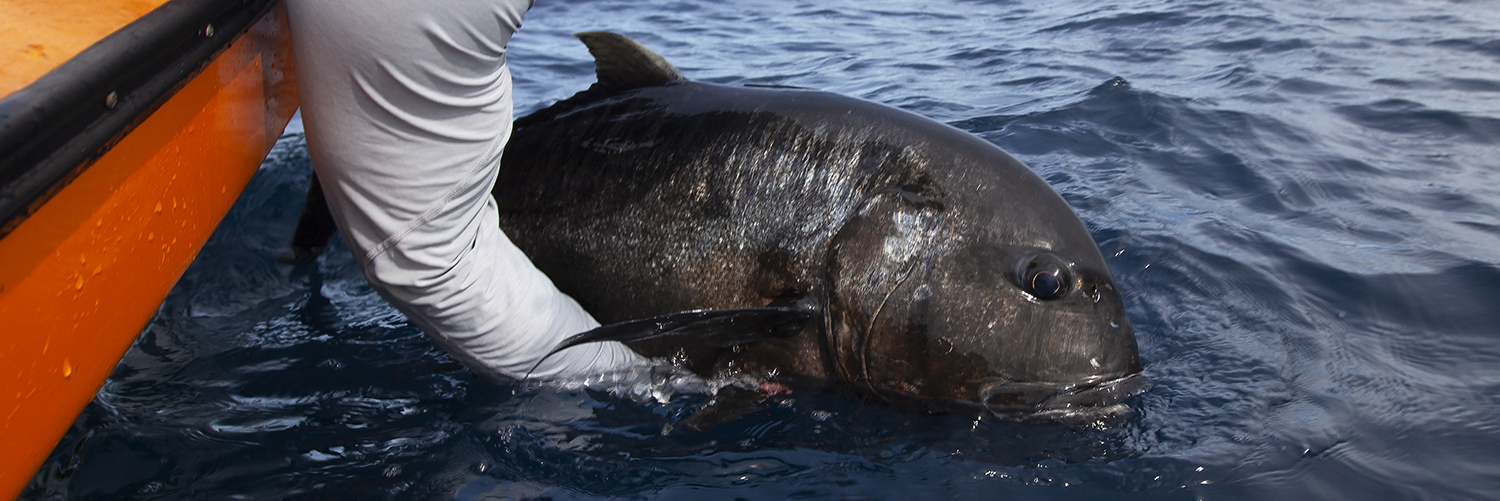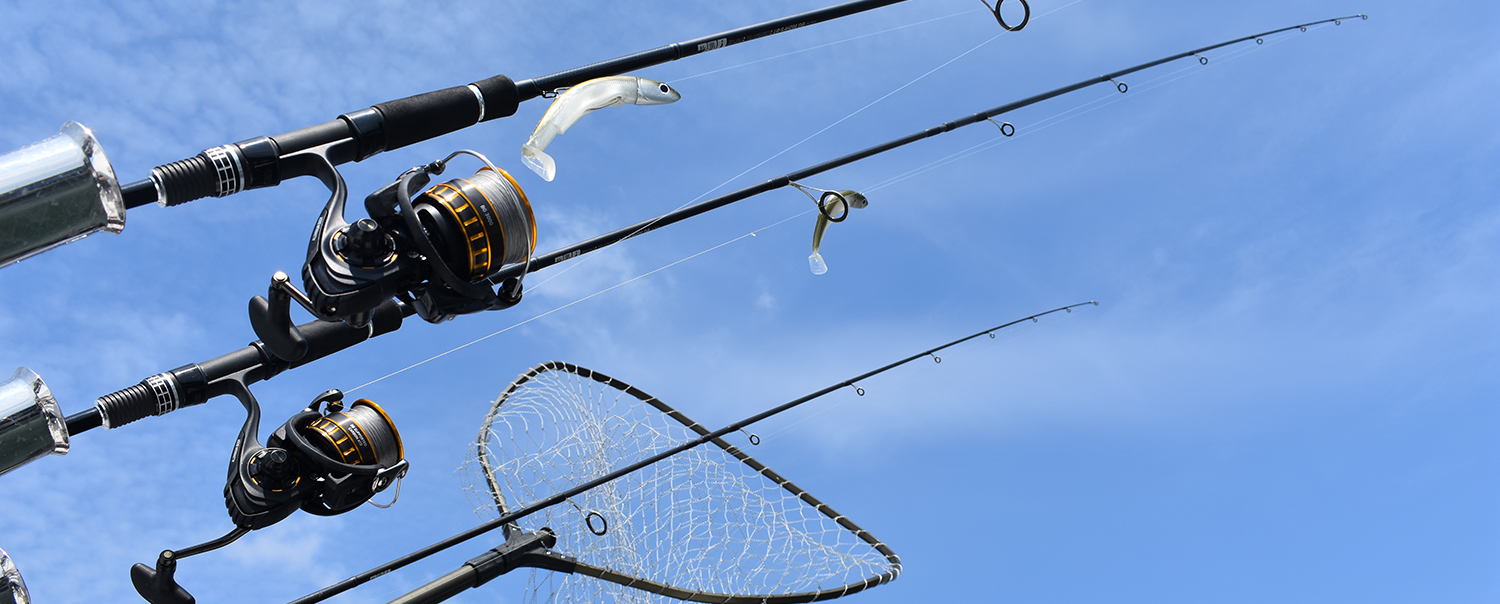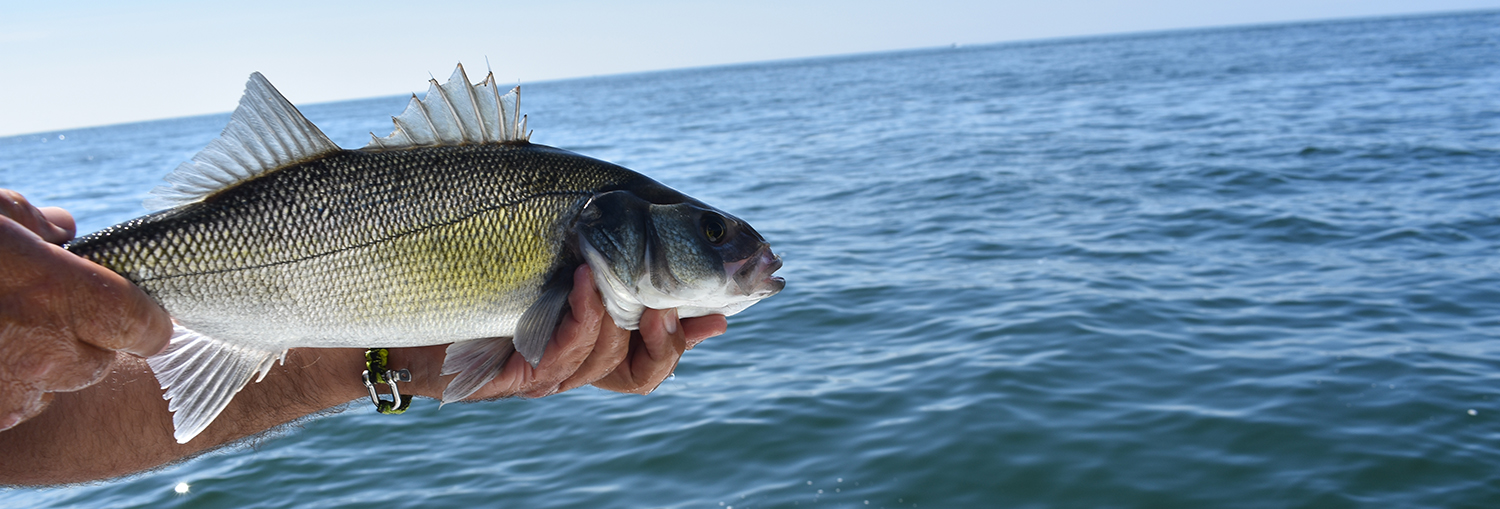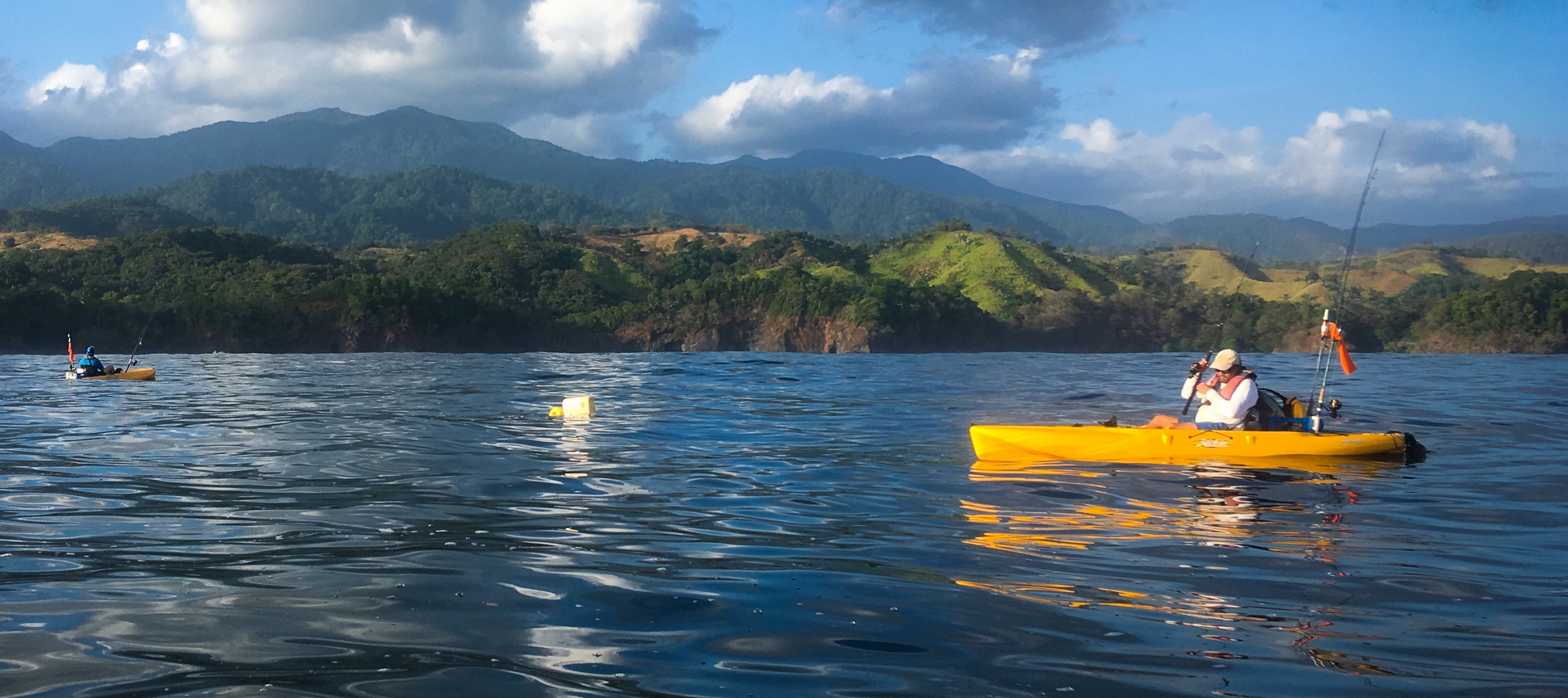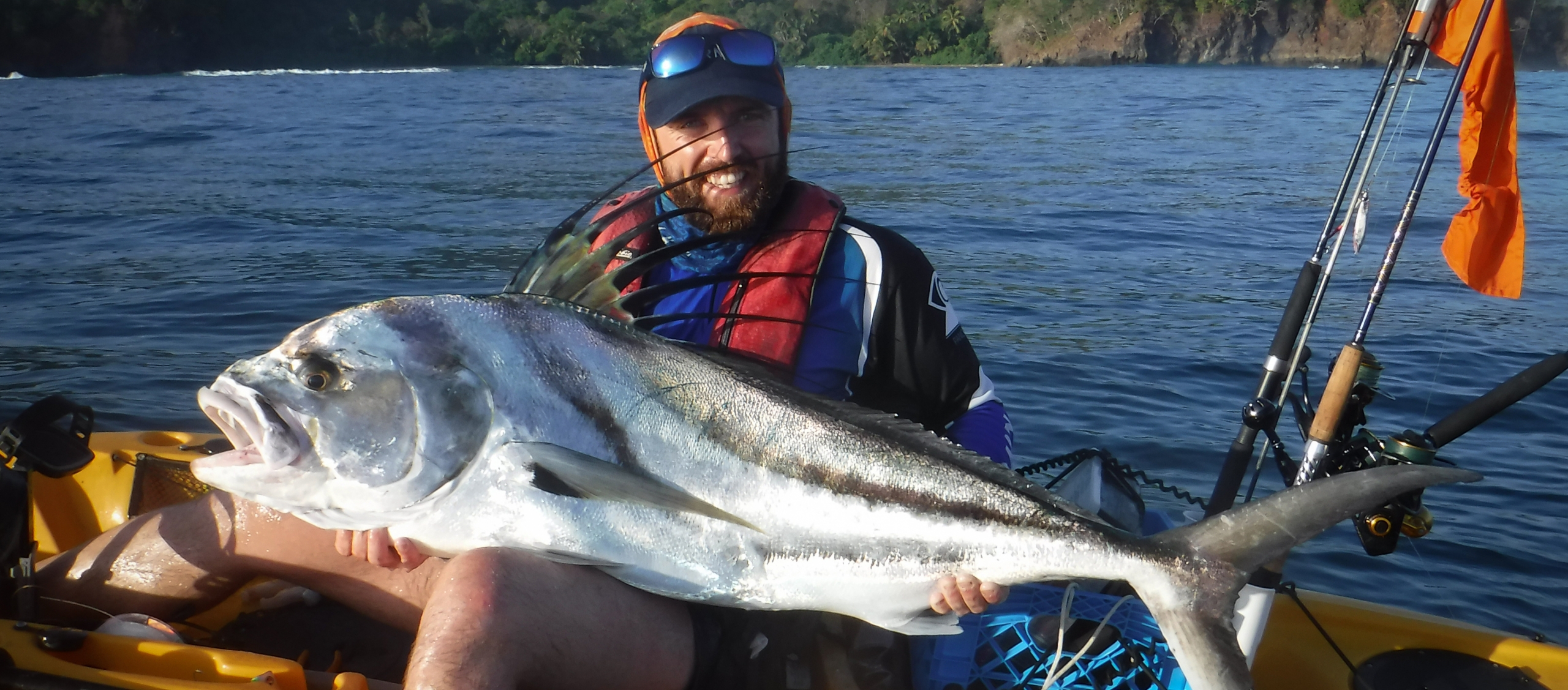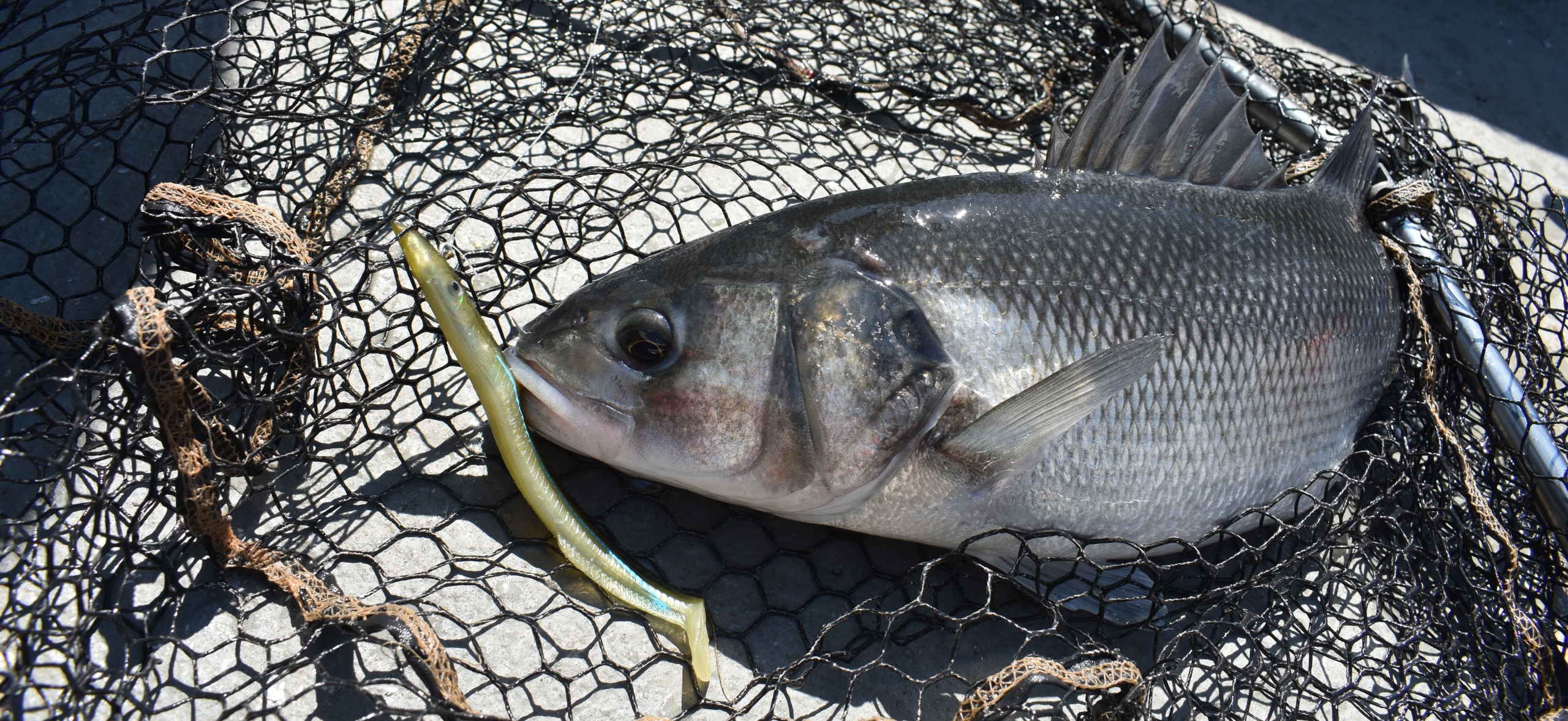Jeff Smith goes through the procedure for launching and landing
If you are first time “trailer launcher” my first piece of advice would be not to worry too much about actually fishing on your maiden voyage, but to concentrate on familiarising yourself with launching your craft, get a feel for how it handles, before returning to your original launch point, and safely recovering the boat. Without thinking it through in advance you could be in for a tricky time.
Forward planning of any boat trip is essential, and is something that tends to come naturally with experience but to begin with, let's pick a day with favourable weather conditions, consistently low wind speeds of below approximately 10 knots, with good visibility for the duration of your trip.

Pick the right tide
Let's also pick a tide that will allow you to launch, and recover your boat comfortably within time constraints for example; If your chosen site has enough water to safely launch your boat three hours either side of high water, aim to be ready at the slipway three hours before high water, and return not more than two hours after high water giving you a safety margin of at least an hour to get the boat back on the trailer which will invariably take longer than the launch.
Check, check and check again
Hazards: Study the area you intend to operate the boat and check for any hazards that should be avoided in advance. Consulting the local harbour office on this issue could prove to be very beneficial. Having decided when and where you are going there are several checks that should be carried out on your boat before you even start your journey to the launch point. Firstly, ensure you have all the necessary safety equipment on board, it is in full working order and that you know how to use it.
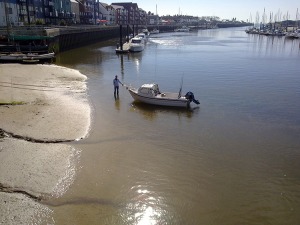
Fuel and Engine checks
Fuel: Check that you have a FULL payload of fresh fuel on board. Running out of fuel at sea is a cardinal sin and something that should never happen. My own Warrior 175 uses approximately one litre of fuel to travel one nautical mile therefore I can easily calculate how much fuel I will use on a trip knowing in advance what mileage I will be covering however, I ALWAYS carry much more fuel than I think I'll need because there are so many factors that could increase your fuel consumption on the day.
Engine check: If you have a handbook for your engine it would be worth studying, and familiarising yourself with the pre-start routine, such as checking the engine oil level etc… It's wise to start up your engine/s at home, and run them up to operating temperature if possible prior to your trip not forgetting that you'll need some means of providing cooling water to your motors such as outboard muffs, which can be connected to a domestic hose pipe. This will ensure that your battery/ batteries are fully charged and whilst doing so, check the operation of all your electrical systems and electronic devices. Finally make sure that your drain plug, if fitted, is securely screwed in place, and check the operation of your steering and, trim tilt mechanisms.
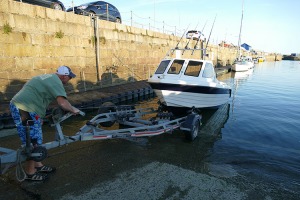
Secure the trailer
Make a thorough check of your trailer, including tyre pressures, and ensure that the boat is securely attached with at least an additional towing eye attachment to compliment the winch, such as a piece of stout rope or chain. I tend to rope up to the stern cleats on both sides firmly attaching it to the trailer framework to prevent lateral movement or the boat bouncing on the trailer. Everything on board should be properly stowed or secured, and your VHF aerial should be lowered so as not to get damaged by overhead snags whilst travelling.
The outboard engine should be tilted up to sufficiently clear the road surface, the propeller covered with a high visibility bag or something similar and your light board should be securely attached and all the lights checked for operation before driving.
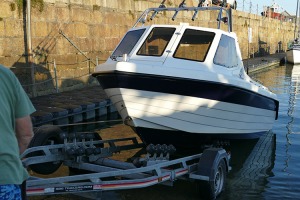
Practice
If you've limited experience of towing a boat then it's a good ides to take your rig to a quiet car park prior to your first launch, and practice your reversing skills with an assistant who can 'see you back'. Aim to be able to manoeuvre your trailer into a pre -determined space marked by cones or parking lines. An hour’s training will certainly pay dividends at the launch site. If possible pick a quiet day, or time of day, to carry out your launch. There is nothing worse than a busy slipway on a bank holiday week-end for the beginner who already has far too much to think/worry about. With experience and practice you may, depending on the size of your craft, be able to launch and recover single handed but I would strongly advice that, for your first attempt, you employ the services of an assistant and if possible, someone with some boating experience.
Although I generally keep my boat on a marina, I frequently travel to alternative fishing sites throughout the season and actually find the process of boat launch and recovery quite satisfying. It’s very useful to make a written list of bullet points to follow to ensure that you don't forget anything and this is something that I still use to this day.
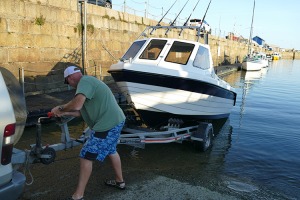
A typical launch sequence
1. Having decided upon a launch time I'll arrive at least half an hour early and park the 'rig' in a quiet place away from the slipway to carry out final checks and preparations.
2. The engine cover, light board, and rear securing ropes are removed and stowed in the vehicle. The boat keys placed in the ignition, main electrical isolation switch turned ON, radio aerial elevated, the vents in the fuel tank opened, the fuel bulb primed so the engine is ready for an immediate start, and any fenders that are required are secured in position.
3. The boat is also loaded with fishing gear, bait, clothing and provisions all tidied away as far as possible so as not to create a trip hazard on the deck area, or inhibit operations.
4. Once slipway is clear, the rig is manoeuvred into position and, as I have a roller trailer (a major advantage) reversed until the bottom of the trailer tyres are just touching the water line.
5. If you have a bunk trailer it will be necessary to submerge it to allow the boat to float off but, do remember to thoroughly flush hubs and bearings with fresh water afterwards.
6. Once in position the vehicle wheels are chocked by my assistant, the handbrake applied and, for extra security first gear (or park if your vehicle has automatic transmission), is selected.
7. A 20m length of stout rope is then securely attached to the bow cleat of the boat, and the end handed to my assistant to hold on to firmly, or even tied to a secure point on my vehicle.
8. The towing eye rope is the last thing to be removed before releasing the winch hook and, usually at this point, a slight shove will see the boat roll smoothly off the trailer and into the water.
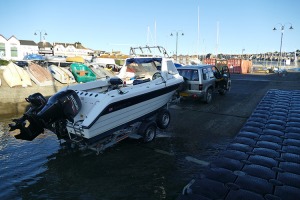
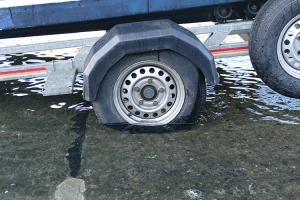
Be aware that some slipways may be too shallow to safely roll the boat off the trailer without bumping the keel and in this case it may be better to slowly winch the boat down the trailer before releasing it fully, or moving the trailer further back into the water.
Once free of the trailer I'll have my assistant either hold the boat clear of other slipway users or, if present, manoeuvre the craft to a pontoon and secure it with mooring ropes whilst I park my rig, not forgetting to collect my wheel chocks, and securing rope.
On returning to my boat, and with my assistant still holding on to the bow line or watching over the mooring ropes, I'll climb on board, tilt the engine down and start it, ensuring that it's running properly and the cooling tell-tale is functioning, switch on my electronics and radio, and ensure there are no trip hazards on the deck and everything is in its place.
Once I'm happy that everything is working properly and in order, I'll Invite my crew member on board ensuring that all mooring ropes and the bow rope are brought inboard before moving off.
Recovery is pretty much the reverse of the above. Waiting until the slipway is clear I'll either get my assistant into the water via the boarding ladder and attach the long bow rope or deploy the fenders and moor the boat to the pontoon, before switching the engine off and tilting it up. The assistant stays with the boat whilst I fetch the rig and position it on the slipway not forgetting to chock the vehicle wheels etc…
The boat is then led up to the trailer before the winch hook is attached to the tow eye and, with my assistant checking that the boat is sitting square, winched fully on to the trailer and secured with the towing eye rope. Once I'm happy that the boat is safely in place, I'll drive the rig clear of the slipway and back to that quiet spot and basically put everything back exactly how it was at the beginning of the exercise.
It all sounds very easy and, to be honest, a first attempt will rarely go without some glitches but, if you take your time, use your list, and think carefully about what you are doing, with a bit of practice the whole operation will run smoothly and look very impressive to those onlookers who always seem to hang around slipways hoping to be entertained by us boaters.
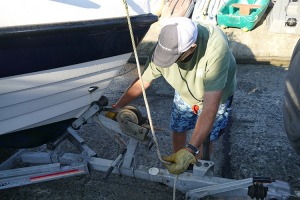
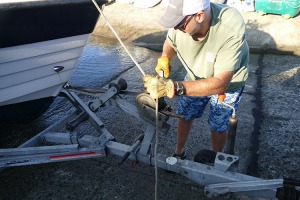
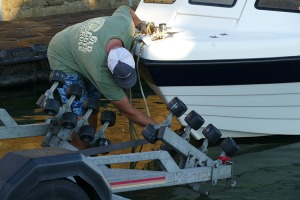
Landing the boat:
When you are returning to the launch point remember to have a plan in place before you actually come in – it might be worth rehearsing this in a quiet moment before you actually go fishing. Remember, a day in a boat will be tiring and tired people make mistakes so thinking it through is worth it, especially if you are coming into a busy slipway.
So here are a few tips
- Make sure you come in at a time when there is sufficient water beneath the keel (obvious but an easy error to make).
- When approaching the slipway slow down and survey the ramp to make sure there aren’t any other boats being winched up or that there aren’t any other people wandering around – they are sometimes favourite crabbing places in the summer time.
- Gently land the boat on the slipway (or moor it nearby) so you can go and get your trailer. Leave your boat partner in change and make sure they are clear that the boat needs to be kept pointing up the ramp and not sideways in – if there is a tide running this may require you to get in the water and manually maintain the boats position.
- Back the trailer down the ramp until the rear roller is underneath the bow keel.
- Attach the winch rope to the bow cleat
- Then you can start winching – making sure the boat is still kept straight ion the trailer.
- Once it is safely on the trailer then drive it off to a safe place to secure the straps, running board and remove your gear and electronics (if appropriate).
Remember to give your boat partner clear instructions about how you intend to proceed.
After a while launching and landing will become a slick operation and seem like second nature - the key thing to remember is that most boating mishaps occur when your are launching and landing.
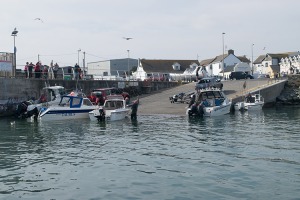
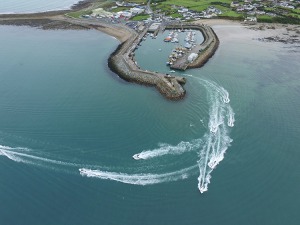
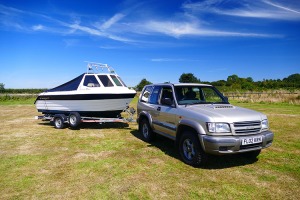
Beach launching from a trailer
The principles of using a trailer on a beach launch are similar to those above except for a few further considerations.
- Make sure you have a vehicle which has a sufficient wheel base to clear the water level
- A four by four with a low gear transmission will also help when retrieving the trailer
- 4x 4 is likely to weight 4 tonnes so make sure the substrate you are driving onto is hard enough to support your vehicle.
- Prepare to get wet
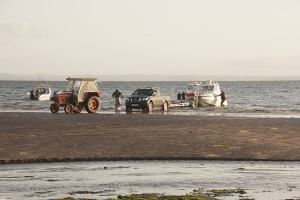
If you enjoyed this article you can buy the issue or subscribe by clicking the links below:
Buy digital copies - £2.99 each Subscribe Now Digital Subscription Click here for 12 Months of digital issues for £19.99
